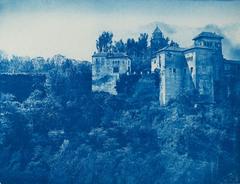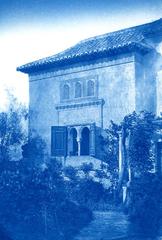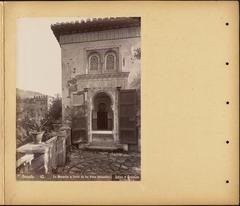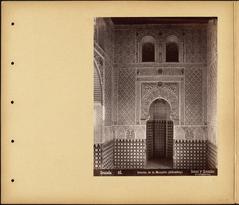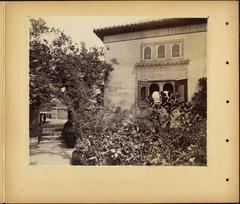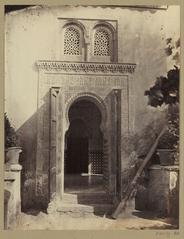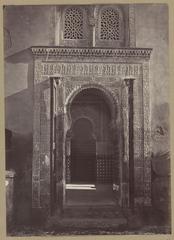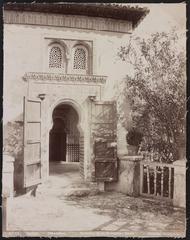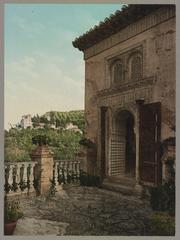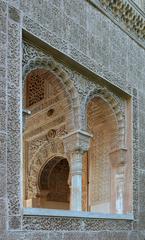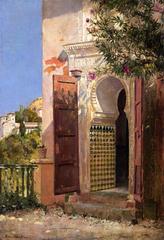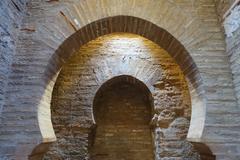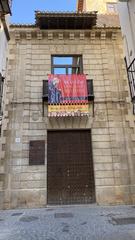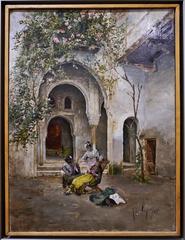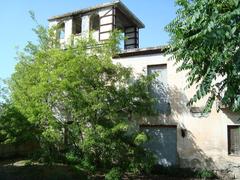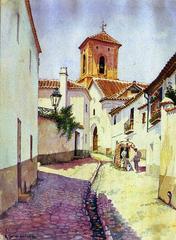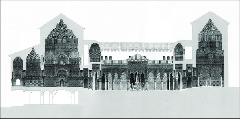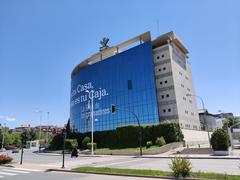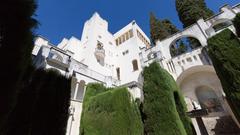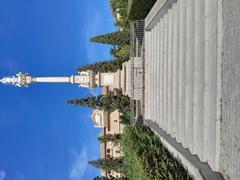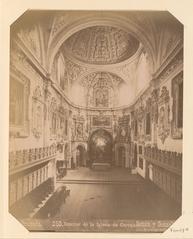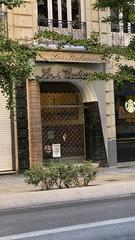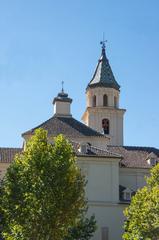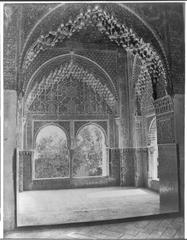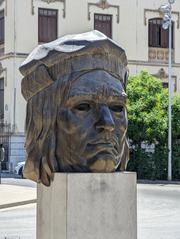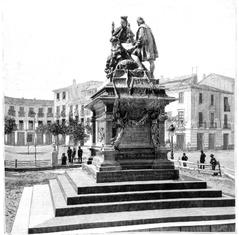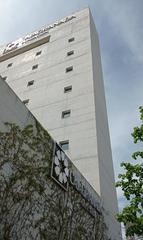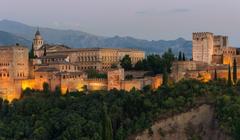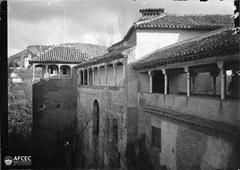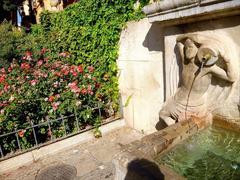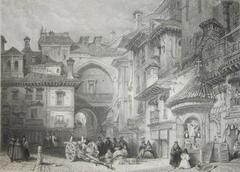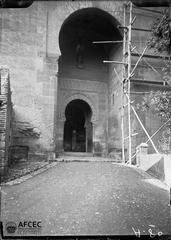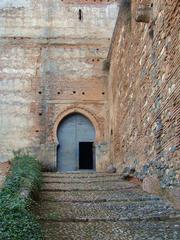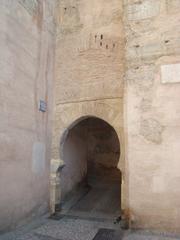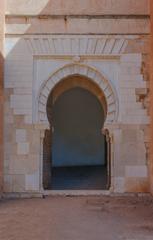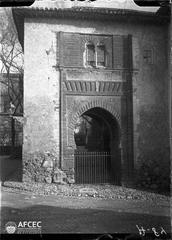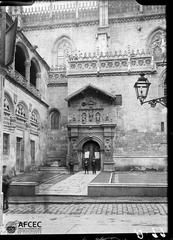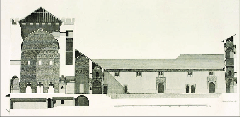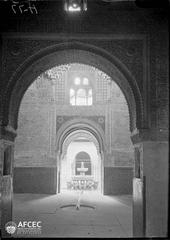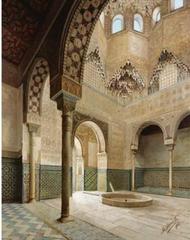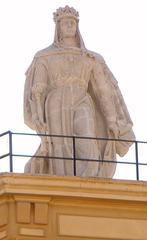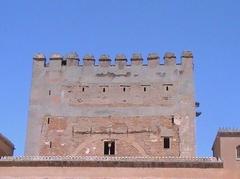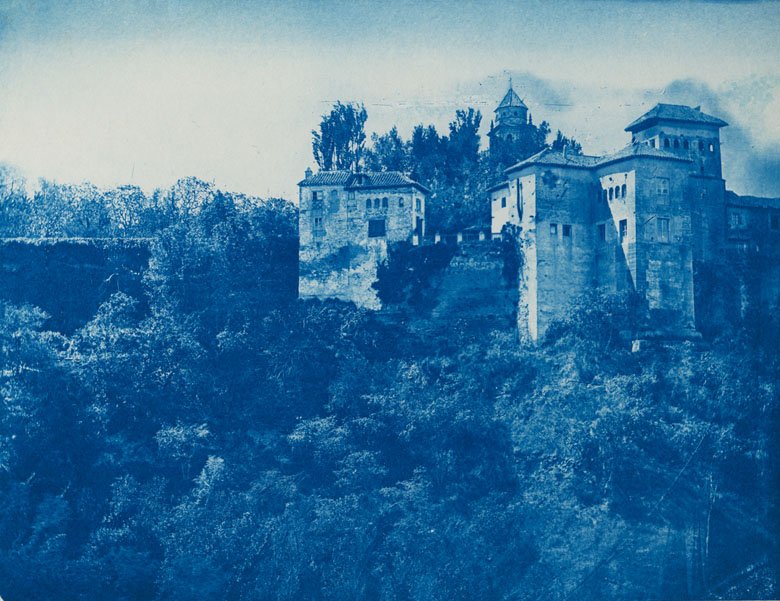
Oratorio Del Partal Granada: Visiting Hours, Tickets, and Historical Sites Guide
Publication Date: 14/06/2025
Introduction
Nestled within Granada’s legendary Alhambra complex, the Oratorio del Partal is a captivating example of Nasrid religious and artistic achievement. Built in the early 14th century, this intimate oratory served as a private prayer space for the Nasrid elite, seamlessly blending Islamic spirituality with refined architectural detail. Whether you are a history enthusiast, art lover, or a traveler planning your Alhambra visit, this comprehensive guide provides essential information on visiting hours, tickets, accessibility, and the oratory’s unique significance in Andalusian heritage (LoveGranada, Madain Project, YatrikaOne).
Contents
- Introduction
- Visiting Hours and Tickets
- Accessibility and Travel Tips
- Architectural and Artistic Significance
- Historical Context and Origins
- Structure and Design
- Decorative Elements
- Integration with Nature
- Conservation and Restoration
- Nearby Attractions
- Frequently Asked Questions (FAQ)
- Conclusion
- Sources and Official Links
Visiting Hours and Tickets
Oratorio del Partal is included in the general admission for the Alhambra. Standard opening hours for the entire complex are:
- April to October: 8:30 a.m. – 8:00 p.m.
- October to March: 8:30 a.m. – 6:00 p.m.
Night visits are also available for some areas, offering a unique ambiance. Hours may vary for holidays or special events, so always check the official Alhambra website for up-to-date details (Alhambra Tickets & Tours).
Tickets must be booked well in advance, as daily visitor numbers are strictly limited. When booking, you must provide passport or ID details for each visitor, and the same identification is required for entry (The Viva La Vita, Earth Trekkers). Digital or printed tickets are accepted.
- Where to buy: Official Alhambra website, authorized travel agencies
- Audioguides: Available for a fee; enhance your experience with in-depth commentary (Cultured Voyages)
Accessibility and Travel Tips
- Getting There: The Alhambra sits atop a hill and is accessible by public transport, taxi, or a moderate uphill walk from central Granada.
- Mobility: The Oratorio del Partal and its surrounding gardens contain some uneven terrain and steps. While the Alhambra has improved accessibility, some areas remain challenging for visitors with disabilities. Contact visitor services in advance for assistance (Official Alhambra Website).
- Best Times: Early mornings or late afternoons are ideal for smaller crowds and softer light—perfect for photography (The Viva La Vita).
- Dress Code: Respectful, modest attire is encouraged due to the oratory’s religious origins. Wear comfortable shoes for extended walking (World Travel Connector).
- Visitor Etiquette: Flash photography and tripods are prohibited to protect delicate decorations. Please avoid touching stucco or woodwork.
Architectural and Artistic Significance
Historical Context and Origins
The Oratorio del Partal was constructed during Sultan Yusuf I’s reign (1333–1354), though some sources attribute its earliest phase to Muhammad III (1302–1309) (LoveGranada, YatrikaOne). Designed as a private mosque or prayer room for palace residents, its placement near the Torre de las Damas (Tower of the Ladies) in the Partal Gardens highlights its ceremonial importance (Nomads Travel Guide).
Structure and Design
The oratory features a rectangular plan oriented toward Mecca, with a prayer hall crowned by a finely crafted wooden artesonado (coffered) ceiling. The entrance, marked by a horseshoe arch, leads into a vestibule that emphasizes privacy and spiritual focus (Lonely Planet).
Decorative Elements
- Mihrab: The focal point, framed by carved stucco and Quranic inscriptions, directs worshippers toward Mecca (YatrikaOne).
- Stucco and Calligraphy: Walls and arches are adorned with geometric patterns, arabesques, and Arabic calligraphy—hallmarks of Nasrid art (Madain Project).
- Ceiling: The Mudéjar-style wooden ceiling, with its eight-pointed stars, exemplifies the blending of Islamic and Christian artistic influences in medieval Spain.
Integration with Nature
Large windows offer framed views of the Partal Gardens and the distant Sierra Nevada, embodying the Islamic garden ideal of paradise and reinforcing the oratory’s atmosphere of reflection and serenity.
Conservation and Restoration
The Oratorio del Partal has been the focus of several major restoration campaigns—in 1846, the 1930s, and most recently from 2013 to 2017. The latest restoration, led by architect Federico Wulff Barreiro, earned the Europa Nostra Grand Prix in 2019 for excellence in heritage conservation. This work uncovered original Nasrid inscriptions and clarified distinctions between Nasrid and later Mudéjar carpentry (SpringerOpen, Granada Hoy).
Climate control and visitor management help protect the oratory’s fragile decorations for future generations (LoveGranada).
Nearby Attractions
Enhance your visit by exploring these highlights within the Alhambra and nearby Granada:
- Torre de las Damas: Adjacent to the oratory, offers scenic views (Nomads Travel Guide).
- Partal Gardens: Serene pathways and reflecting pools ideal for relaxation.
- Nasrid Palaces: Comares, Lions, and Mexuar Palaces, renowned for intricate stucco and tilework.
- Alcazaba: The fortress with panoramic city and mountain vistas (Rough Guides).
- Generalife Gardens: Nasrid summer palace with lush terraces (Nomads Travel Guide).
- Albaicín: Moorish quarter with the Mirador de San Nicolás and winding historic lanes.
- Granada Cathedral and Royal Chapel: Final resting place of Spain’s Catholic Monarchs (Rough Guides).
- Sacromonte: Famous for flamenco shows and cave dwellings (Nomads Travel Guide).
Frequently Asked Questions (FAQ)
Do I need a separate ticket for the Oratorio del Partal?
No, entry is included with your general Alhambra ticket.
Are guided tours available?
Yes—many Alhambra tours include the oratory and offer insights into Nasrid art and culture (Cultured Voyages).
Is the Oratorio del Partal accessible for visitors with disabilities?
Some areas may be challenging due to the historic terrain, but the Alhambra has made improvements. Contact the visitor center for specific needs.
What are the best times for photography?
Early morning and late afternoon offer the best light and fewer crowds (The Viva La Vita).
Can I visit only the Oratorio del Partal?
No, it is part of the Alhambra complex and accessed with general admission.
Conclusion
The Oratorio del Partal stands as a testament to the spiritual, artistic, and architectural heights achieved by Nasrid Granada. Carefully planned restoration and visitor management ensure that this jewel of the Alhambra remains accessible and awe-inspiring. To fully appreciate its significance, plan your visit in advance, consider a guided tour, and take time to enjoy the tranquil gardens and broader Alhambra complex. Your journey through Granada’s layered history is not complete without a moment of reflection in this remarkable oratory.
Sources and Official Links
- Love Granada Guide to Oratorio del Partal, 2024
- Visiting the Oratorio del Partal in Granada: Hours, Tickets, History, and Artistic Highlights, 2024
- YatrikaOne: Oratorio Del Partal Interior View with Mihrab, 2024
- Earth Trekkers: Alhambra Guide, 2024
- The Viva La Vita: Alhambra Visit Tips, 2024
- World Travel Connector: Visit Alhambra Tips and Tricks, 2024
- Madain Project: Oratory of the Partal Palace, 2024
- Nomads Travel Guide: Mezquita del Partal, 2024
- SpringerOpen: Restoration and Heritage of Oratorio del Partal, 2024
- Rough Guides: Granada and Alhambra Overview, 2024
- Official Alhambra Tickets and Visitor Info, 2024
- Cultured Voyages: Visiting the Alhambra Tips, 2024
